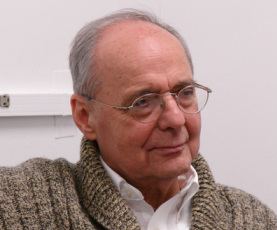Name Marcel Kinsbourne | Education University of Oxford | |
 | ||
Books Children's Learning and Attention Problems, Cerebral Hemisphere Function | ||
Marcel Kinsbourne (born 1931) is an Austrian-born pediatric neurologist and cognitive neuroscientist who was an early pioneer in the study of brain lateralization. He is a Professor of Psychology at The New School in New York City and is affiliated with the Center for Cognitive Studies at Tufts University.
Kinsbourne obtained his M.D. degree (styled B.M., BCh., Oxon.) in 1955 and D.M. degree (a "higher doctorate" based on original research) at Oxford University in 1963, where he served on the Psychology Faculty as of 1964 before relocating to the United States in 1967. He has held Professorships in both Neurology and Psychology at Duke University and the University of Toronto, and headed the Behavioral Neurology Research Division at the Shriver Center in Boston, Massachusetts. He also served as Presidents of the International Neuropsychological Society and the Society for Philosophy and Psychology.
Kinsbourne's considerable body of research involves multiple areas of cognitive neuroscience, including brain-behavior relations; consciousness; imitation; laterality among normal and abnormal populations; memory and amnestic disorders; unilateral neglect; attention and Attention Deficit Disorder; autism; learning disabilities; mental retardation, and dyslexia.
Kinsbourne was the first to identify and systematically describe the infant disorder "opsoclonus myoclonus" syndrome, sometimes called Kinsbourne syndrome in his honor. He also was first to describe "hiatus hernia" with contortions of the neck, subsequently called Sandifer Syndrome in honor of his mentor, Paul Sandifer.
Kinsbourne's latest publication was Somatic Twist: A Model for the Evolution of Decussation (2013). He has published over 400 articles, including: The Corpus Callosum as a Component of a Circuit for Selection, How the Senses Combine in the Brain, and Disorders of Mental Development.
Kinsbourne also published an article titled The Immune System’s Moderating Response to Inflammation Relieves Autistic Behavior: Response to Peter Good. He noticed that each autistic movement is caused by pathologically heightened arousal. He concluded that autistic behaviors can be improved with a fever. If this is true then a remedy for autism maybe a simple stimulation of the vagus nerve.
At the same time Kinsbourne wrote two articles which were published in 1993, one being Unity and Diversity in the Human Brain: Evidence from Injury where he talks about cognitive neuropsychology, and the other article Awareness of Deficit After Brain Injury: Clinical and Theoretical Issues where he talks about the systematic review he performs for certain types of disorders.
